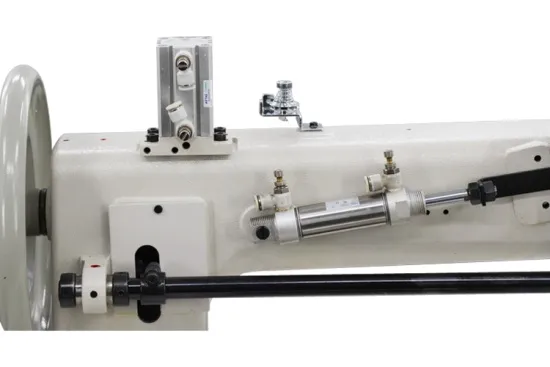Industrial Overlock Sewing Machines for Efficient and Precise Garment Production
The Importance of Overlock Sewing Machines in Industrial Settings
In the world of industrial sewing, efficiency, speed, and precision are paramount. One of the most essential tools that fulfill these requirements is the overlock sewing machine. Also known as a serger, this specialized machine plays a vital role in the garment manufacturing process by ensuring seams are not only strong and durable but also aesthetically pleasing. This article delves into the functionalities, advantages, and applications of overlock sewing machines in an industrial context.
What is an Overlock Sewing Machine?
An overlock sewing machine is designed to trim excess fabric and simultaneously stitch the raw edges together, preventing fraying. Unlike standard sewing machines that create a straight stitch, overlock machines utilize multiple threads to create a serged edge. Most models feature at least two to five threads, allowing for a variety of stitch types and finishes. The ability to roll hem, create narrow hems, and tackle differential feed for stretchy materials makes these machines indispensable for professionals in the fashion and textile industries.
Key Features and Functionality
1. Speed and Efficiency Overlock machines are known for their high-speed capabilities, often sewing up to 1,500 stitches per minute. This efficiency is crucial in meeting production deadlines without compromising quality.
2. Versatility The ability to perform various stitches—like 3-thread, 4-thread, and 5-thread overlocking—enables manufacturers to use one machine for multiple applications. This versatility helps businesses save time and costs associated with operating multiple machines.
3. Edge Finishing The primary function of an overlock machine is to finish raw edges, significantly reducing the risk of fabric fraying. This not only enhances the durability of the garment but also improves its overall appearance.
4. Differential Feed Many modern overlock machines come equipped with a differential feed mechanism that allows for adjustments based on the type of fabric being used. This feature ensures that even stretchy materials like knits and jersey fabrics can be sewn without distortion.
5. Integrated Trimming Overlock machines usually come with an integrated fabric trimmer that slices away excess fabric while sewing. This dual function leads to a more efficient workflow, as operators can perform several tasks in one go.
Advantages of Using Overlock Machines in Industrial Sewing
overlock sewing machine industrial

1. Enhanced Productivity In today’s fast-paced industrial environment, the ability to produce high-quality garments efficiently can significantly boost profitability. Overlock machines streamline the sewing process, allowing manufacturers to increase output without sacrificing quality.
2. Cost-Effectiveness Although the initial investment in an overlock sewing machine can be higher than a standard sewing machine, the long-term benefits and savings on fabric wastage, labor costs, and production time make it a worthwhile investment.
3. Improved Quality The precision offered by overlock machines helps achieve tight seams that enhance the garment's fit and finish. This results in higher quality products that can meet consumer standards and expectations.
4. Reduction in Labor With automated features and higher sewing speeds, fewer operators are needed to accomplish the same amount of work compared to traditional sewing methods. This reduction in labor can lead to lower operational costs.
Applications in the Fashion Industry
Overlock sewing machines find extensive use in various sectors of the fashion industry, including
- Ready-to-Wear Garments High-volume clothing production requires machines that can keep up with the demand while ensuring high quality. Overlock machines are perfect for assembling clothing with multiple seams and finishes.
- Activewear and Sportswear The elasticity of activewear fabrics demands specialized stitching, which overlock machines handle with ease. Their ability to stretch without compromising seam integrity is crucial in this sector.
- Home Textiles Whether making curtains, upholstery, or bedding, the finishing capabilities of an overlock machine ensure products are durable and well-crafted.
Conclusion
In conclusion, overlock sewing machines occupy a critical niche in the industrial sewing landscape. Their ability to efficiently finish seams, enhance productivity, and ensure high-quality outputs makes them an invaluable asset for manufacturers. As the fashion industry continues to evolve, the role of overlock machines will undoubtedly expand, adapting to new challenges while facilitating the creation of stylish and durable garments. Their significance in the production line cannot be underestimated, as they combine innovation with practicality in the quest for excellence in textile manufacturing.
-
Industrial Cylinder Arm Sewing Machine: Revolutionizing Heavy-Duty SewingNewsJul.28,2025
-
Cylinder Arm Sewing Machine: Perfect for Special Sewing ApplicationsNewsJul.28,2025
-
Cylinder Bed Sewing Machine: Essential for Sewing Complex MaterialsNewsJul.28,2025
-
Heavy Duty Sewing Machine: The Essential Tool for Industrial ApplicationsNewsJul.28,2025
-
Computerized Pattern Sewing Machine: Revolutionizing Precision StitchingNewsJul.28,2025
-
Heavy Duty Industrial Sewing Machine: Power Meets PrecisionNewsJul.28,2025
-
Leather Sewing Machine: The Industrial Standard for Tough MaterialsNewsJul.18,2025





























